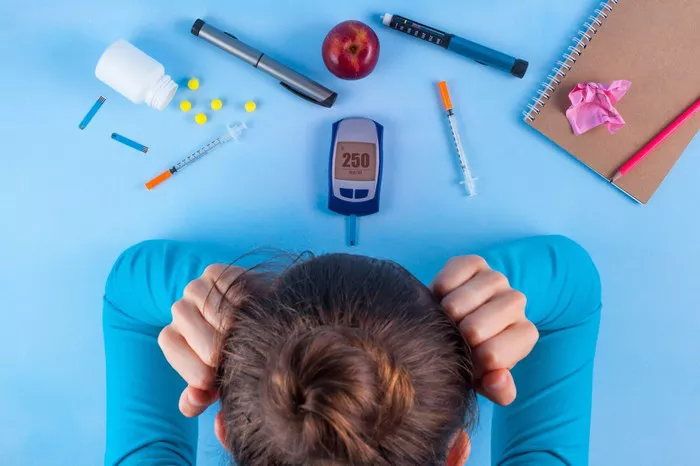Type 1 diabetes, previously known as juvenile diabetes, is an autoimmune condition characterized by the destruction of insulin-producing beta cells in the pancreas. This leads to an inability to regulate blood glucose levels effectively. Unlike type 2 diabetes, which is often associated with lifestyle factors and typically develops in adults, type 1 diabetes can occur at any age, though it is most commonly diagnosed in children, adolescents, and young adults. This article will delve into the age demographics most commonly affected by type 1 diabetes, the underlying reasons for these patterns, and the implications for healthcare and management strategies.
The Prevalence of Type 1 Diabetes in Different Age Groups
Type 1 diabetes is most frequently diagnosed in children and adolescents. According to the International Diabetes Federation (IDF), the highest incidence rates are observed in children aged 10-14 years. However, it is important to recognize that type 1 diabetes can manifest at any age, from infancy to adulthood, and the patterns of diagnosis can vary geographically and ethnically.
Childhood and Adolescence
The majority of type 1 diabetes cases are diagnosed in individuals under the age of 18. The peak incidence typically occurs around the time of puberty, which is associated with increased insulin resistance and hormonal changes that may unmask underlying autoimmune processes. The following points outline the prevalence and key considerations for type 1 diabetes in this age group:
- Infancy and Early Childhood (0-5 years): Although relatively rare, type 1 diabetes can be diagnosed in very young children and even infants. Diagnosis at this age can be particularly challenging due to the nonspecific nature of symptoms and the inability of young children to articulate their experiences. Common symptoms include excessive thirst, frequent urination, unexplained weight loss, and irritability. Early diagnosis and prompt intervention are critical to prevent severe complications such as diabetic ketoacidosis (DKA).
- Middle Childhood (6-12 years): This age group experiences a steady increase in the incidence of type 1 diabetes. School-aged children may present with classic symptoms such as polyuria, polydipsia, polyphagia, and fatigue. The onset of diabetes during these years can significantly impact a child’s academic performance, social interactions, and overall quality of life. Family support and education about diabetes management play a crucial role in ensuring optimal glycemic control and minimizing disruptions to daily life.
- Adolescence (13-18 years): Adolescence represents the peak age for type 1 diabetes diagnosis. Hormonal changes during puberty, coupled with increased insulin resistance, contribute to the higher incidence observed in this age group. Adolescents face unique challenges in managing their diabetes, including balancing school responsibilities, social activities, and the desire for independence with the need for regular blood glucose monitoring, insulin administration, and dietary considerations. Psychosocial support and diabetes education tailored to the developmental stage are essential for successful diabetes management during these formative years.
Young Adulthood
While type 1 diabetes is most commonly diagnosed in children and adolescents, a significant number of cases are identified in young adults aged 19-30 years. The presentation in this age group can vary, with some individuals experiencing a rapid onset of symptoms and others having a more gradual progression. Factors contributing to the diagnosis of type 1 diabetes in young adults include:
- Latent Autoimmune Diabetes in Adults (LADA): Also known as type 1.5 diabetes, LADA is a form of autoimmune diabetes that presents in adulthood with features of both type 1 and type 2 diabetes. Individuals with LADA often have a slower progression of beta-cell destruction and may initially be misdiagnosed with type 2 diabetes. Proper identification and management of LADA are crucial to prevent complications associated with inadequate glycemic control.
- Genetic and Environmental Factors: The development of type 1 diabetes in young adults may be influenced by a combination of genetic predisposition and environmental triggers. Family history of diabetes, viral infections, and other autoimmune conditions are among the factors that can increase the risk of developing type 1 diabetes in this age group.
Factors Influencing the Age of Onset
The age at which type 1 diabetes is diagnosed can be influenced by a variety of genetic, environmental, and immunological factors. Understanding these factors is essential for identifying at-risk populations and developing targeted prevention and intervention strategies.
Genetic Predisposition
Genetic susceptibility plays a significant role in the development of type 1 diabetes. Specific genes, particularly those within the human leukocyte antigen (HLA) complex, are associated with an increased risk of developing the condition. The presence of certain HLA genotypes, such as HLA-DR3 and HLA-DR4, is strongly linked to a higher risk of type 1 diabetes. Additionally, having a first-degree relative (e.g., a parent or sibling) with type 1 diabetes significantly increases the risk of developing the condition, indicating a heritable component.
Environmental Triggers
Environmental factors are believed to interact with genetic predisposition to trigger the autoimmune process that leads to type 1 diabetes. Some of the key environmental triggers include:
- Viral Infections: Certain viral infections, such as enteroviruses, have been implicated in the onset of type 1 diabetes. These infections may trigger an autoimmune response that targets the insulin-producing beta cells in genetically susceptible individuals.
- Dietary Factors: Early introduction of certain foods, such as cow’s milk or gluten, has been studied as potential risk factors for type 1 diabetes. However, the evidence is not conclusive, and more research is needed to establish a clear link between diet and the development of the disease.
- Geographic and Seasonal Variation: The incidence of type 1 diabetes varies by geographic region, with higher rates observed in northern Europe and lower rates in Asian countries. Seasonal patterns have also been noted, with a higher incidence of diagnosis in the winter months, suggesting that environmental factors such as viral infections may play a role.
Immunological Factors
Type 1 diabetes is an autoimmune condition characterized by the destruction of insulin-producing beta cells by the body’s own immune system. The presence of autoantibodies, such as insulin autoantibodies (IAA), glutamic acid decarboxylase antibodies (GADA), and islet cell antibodies (ICA), is indicative of an ongoing autoimmune process. The development and persistence of these autoantibodies can vary with age, influencing the timing of diabetes onset.
Implications for Healthcare and Management
Understanding the age group most commonly affected by type 1 diabetes has important implications for healthcare providers, patients, and policymakers. Early diagnosis and effective management are critical to improving outcomes and quality of life for individuals with type 1 diabetes. The following sections highlight key considerations for healthcare and management strategies across different age groups.
Pediatric and Adolescent Care
The diagnosis of type 1 diabetes in children and adolescents necessitates a comprehensive approach that addresses the medical, psychological, and social aspects of the disease. Key components of pediatric and adolescent diabetes care include:
- Multidisciplinary Care Teams: A team-based approach involving endocrinologists, diabetes educators, dietitians, psychologists, and social workers is essential for providing comprehensive care. This ensures that all aspects of diabetes management, from insulin therapy and blood glucose monitoring to dietary planning and mental health support, are addressed.
- Family Education and Support: Educating families about diabetes management is crucial, as parents and caregivers play a significant role in supporting children and adolescents with diabetes. Family involvement in diabetes care can improve adherence to treatment regimens and enhance overall well-being.
- School Support: Collaboration with schools is vital to ensure that children and adolescents with diabetes receive appropriate accommodations and support during the school day. This includes training school staff on recognizing and managing hypoglycemia, providing access to diabetes supplies, and allowing flexibility for blood glucose monitoring and insulin administration.
Young Adult Care
Young adults with type 1 diabetes face unique challenges as they transition from pediatric to adult care. This transition period requires careful planning and support to ensure continuity of care and successful diabetes management. Key considerations for young adult care include:
- Transition Programs: Structured transition programs that facilitate the transfer of care from pediatric to adult diabetes services can help young adults navigate this critical period. These programs often involve joint clinics with pediatric and adult healthcare providers, as well as educational sessions on self-management and adult healthcare responsibilities.
- Individualized Care Plans: Young adults may experience changes in lifestyle, such as starting college, entering the workforce, or living independently, which can impact diabetes management. Individualized care plans that address these changes and provide practical strategies for maintaining glycemic control are essential.
- Psychosocial Support: Mental health support is crucial for young adults with type 1 diabetes, as they may face increased stress, anxiety, and depression related to their condition. Access to counseling and support groups can help young adults cope with the emotional challenges of diabetes management.
See also: I Have Type 1 Diabetes: Now What?
Conclusion
Type 1 diabetes is most commonly diagnosed in children and adolescents, with a peak incidence during adolescence. However, it is important to recognize that type 1 diabetes can occur at any age, including young adulthood and beyond. Understanding the age demographics and underlying factors influencing the onset of type 1 diabetes is essential for developing targeted prevention and intervention strategies. Healthcare providers must adopt a comprehensive and individualized approach to diabetes care, addressing the medical, psychological, and social needs of patients across different age groups. By doing so, we can improve outcomes and quality of life for individuals living with type 1 diabetes.
Related topics:
What’s the Most Common Urinary Symptom in Diabetes Mellitus
What’s the Cause and Implication Late of Onset Type 1 Diabetes


























